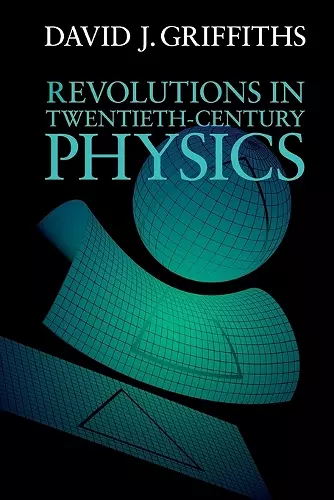Revolutions in Twentieth-Century Physics
Format:Paperback
Publisher:Cambridge University Press
Published:8th Nov '12
Currently unavailable, and unfortunately no date known when it will be back

A clear and lively account of the conceptual foundations of modern physics, suitable for undergraduate students in non-science subjects.
A clear and lively account of the conceptual foundations of modern physics, this book explores relativity, quantum mechanics, elementary particles and cosmology. Suitable for undergraduate students in non-science subjects, it uses problems and worked examples to help readers develop an understanding of what recent advances in physics actually mean.The conceptual changes brought by modern physics are important, radical and fascinating, yet they are only vaguely understood by people working outside the field. Exploring the four pillars of modern physics – relativity, quantum mechanics, elementary particles and cosmology – this clear and lively account will interest anyone who has wondered what Einstein, Bohr, Schrödinger and Heisenberg were really talking about. The book discusses quarks and leptons, antiparticles and Feynman diagrams, curved space-time, the Big Bang and the expanding Universe. Suitable for undergraduate students in non-science as well as science subjects, it uses problems and worked examples to help readers develop an understanding of what recent advances in physics actually mean.
"Nonspecialists and nonscientists curious about such topics as spacetime, the EPR paradox, chromodynamics, and the origins of matter will find this concise account a helpful introduction. He [Griffiths] reconnoiters relativity, quantum mechanics, elementary particles, and cosmology. Worked examples and scattered problems serve to reinforce readers' comprehension." Science
ISBN: 9781107602175
Dimensions: 227mm x 152mm x 9mm
Weight: 300g
182 pages